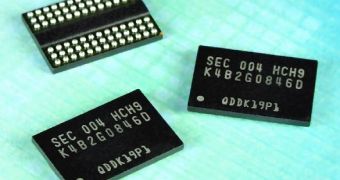By now, end-users are probably expecting more price declines as far as the memory market goes and, sure enough, market watchers have reported that spot prices did indeed go down during the early days of December.
As end-users probably know, the semiconductor market, or at least some parts of it, haven't been doing very well lately.
In the case of NAND Flash chips, prices managed to rebound somewhat, especially after the unfortunate power outage that Toshiba experience not long ago.
The DRAM market isn't really doing so well, however, and was previously reported to be set to decline, as far as prices went, until 2011.
The main reason is the oversupply that exists because of how manufacturers migrated to more advanced manufacturing processes and how demand didn't manage to keep up with the transition.
Sure enough, the decreasing price trend held true over the first week of December, even after the already visible plunge during November.
Granted, some prices managed to remain unchanged compared to the second half of last month.
This includes 1 Gb DDR2, which was quoted at US$1.16-1.28, meaning that 2 GB DDR2 modules held on to their average of US$22.
The other chips that remained flat were 128 Mb SDRAM and 256 Mb DDR, which ended up at US$0.65 and US$0.86, respectively.
The chips that did go through another price fall were 1 Gb DDR3 which, after getting 13.35% cheaper in the second half of November, fell by another 10.66%.
This left 2 GB DDR3 modules with an average price of US$20 in the first half of December, 9.09% lower on-month and even cheaper than the aforementioned 2 GB DDR2 modules.
Prices will keep falling even through the first half of 2011 and might end up going down on-quarter by 40% during the ongoing Q4 of 2010 alone.

 14 DAY TRIAL //
14 DAY TRIAL //